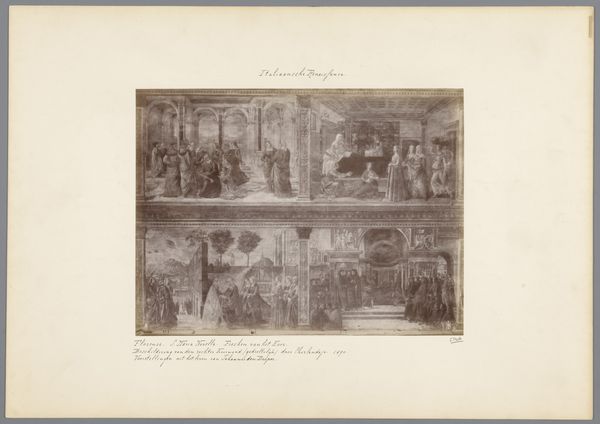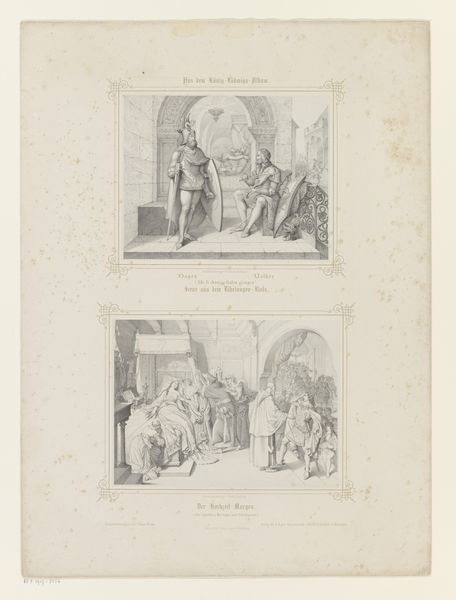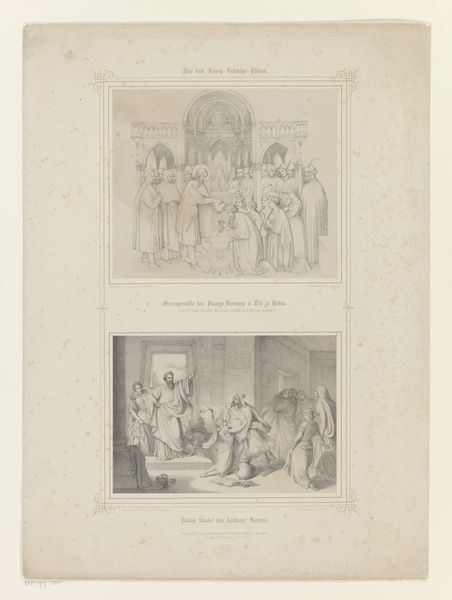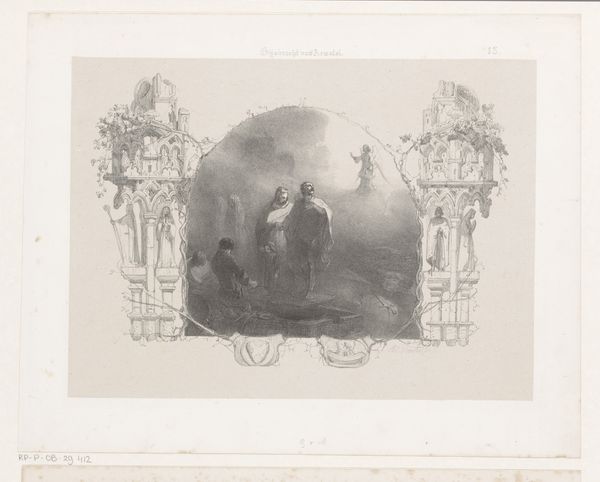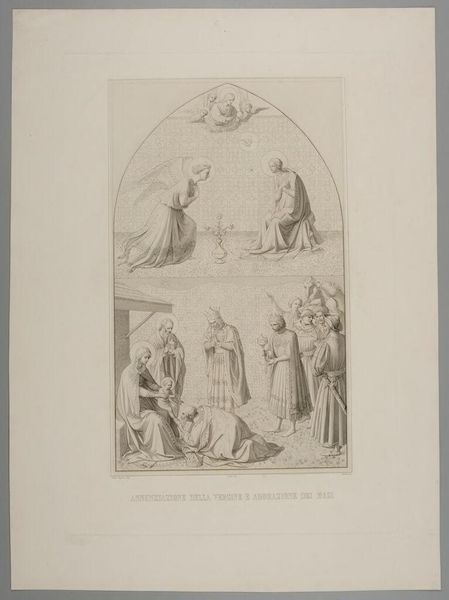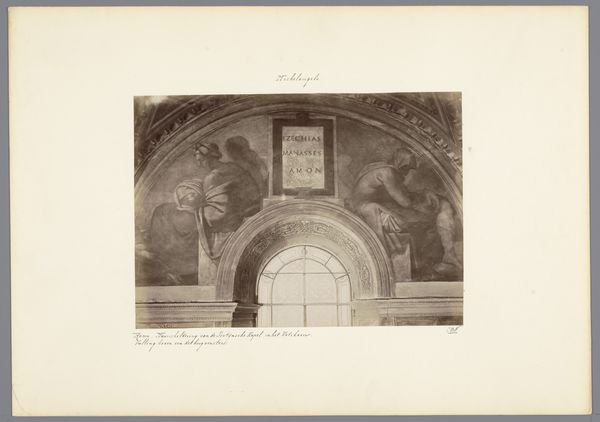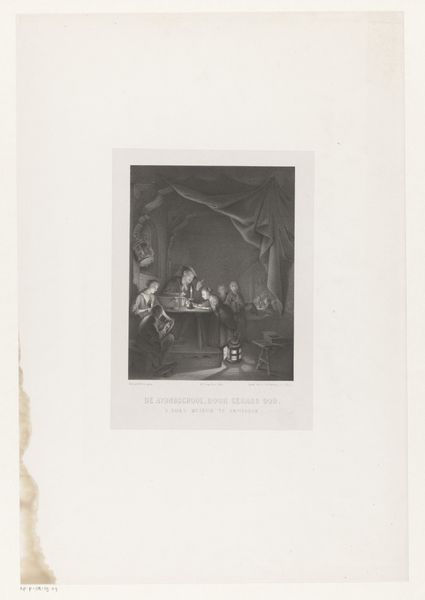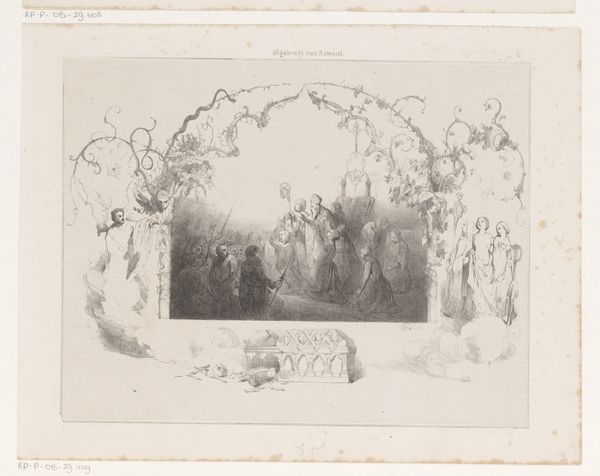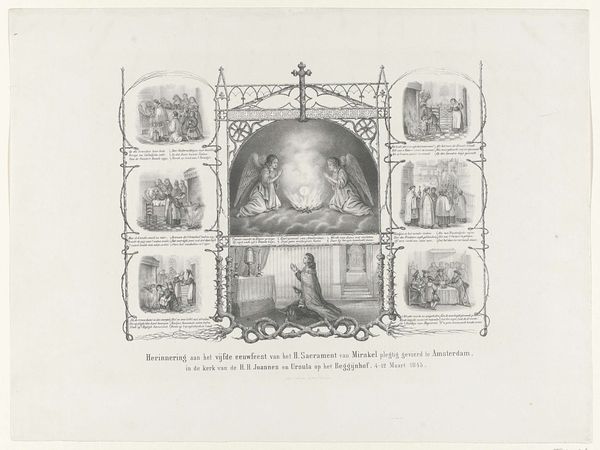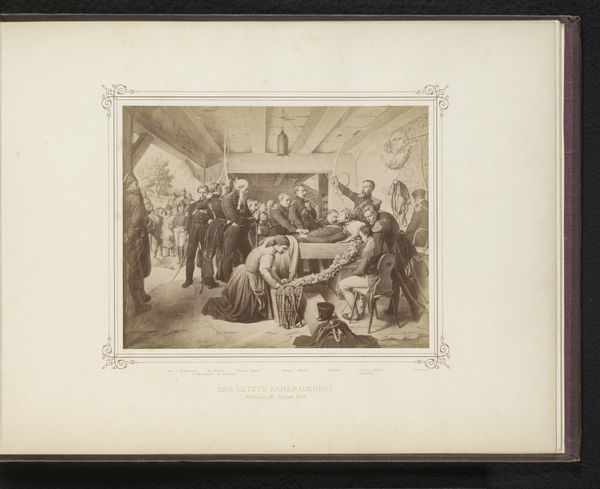
Fotoreproductie van een fresco in het voormalig San Marco klooster te Florence door Fra Angelico, voorstellend de kroning van Maria c. 1875 - 1900
0:00
0:00
print, fresco, photography, gelatin-silver-print
#
portrait
# print
#
fresco
#
photography
#
gelatin-silver-print
#
history-painting
#
italian-renaissance
Dimensions: height 244 mm, width 194 mm
Copyright: Rijks Museum: Open Domain
Curator: Here we have a gelatin silver print dating from approximately 1875 to 1900. It is a photographic reproduction of a fresco by Fra Angelico, located in the former San Marco monastery in Florence. The image portrays the Coronation of the Virgin. Editor: My immediate impression is one of serene grace, despite the limitations of the photographic reproduction. The subdued tones evoke a sense of otherworldly calm, and the composition—the elevated figures above a gathering of saints—feels both hierarchical and harmonious. Curator: Indeed. It's crucial to remember that this isn't the original fresco. Consider the shift in meaning – a work initially intended to inspire devotional thought within a monastic community is transformed into a portable image for broader consumption in an era of rising photography and print culture. How does that shift affect its power? Editor: That’s a vital point. The very act of photographing, then printing, inherently changes the way we experience this spiritual moment. Looking at the figures, the image of the crown and those halos, circular symbols of holy figures - all powerfully resonate, speaking to the idea of cultural memory being woven and re-woven with each reiteration. This single crown atop Mary seems a powerful indicator of Western European artistic understanding. Curator: Exactly. We can read this within larger power dynamics. Who has the authority to depict the sacred, and who gains access through reproduction? The original fresco functioned within a specific religious and social context. Here, in this reproduction, that context is altered, the image commodified and democratized, potentially. Editor: But it is more than merely representational, as you point out. Look how the artist uses circular halos above each blessed one. These all help me appreciate the deeper themes within religious ideology as those figures gaze upward. Curator: It begs the question – does photographic reproduction liberate or diminish the art it copies? It definitely offers us new avenues for understanding the cultural role of this artwork. Editor: Precisely. What was intended as spiritual art can have greater access through media and technique! Curator: The transformation across centuries and media reshapes not just its audience, but also its intrinsic cultural function and meanings. Editor: The photographic distance reveals so much more than mere reverence alone.
Comments
No comments
Be the first to comment and join the conversation on the ultimate creative platform.
